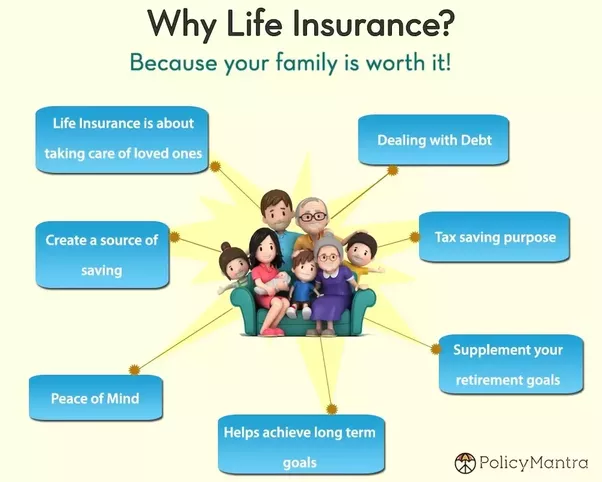The Best Guide To Pacific Prime
The Best Guide To Pacific Prime
Blog Article
Pacific Prime Can Be Fun For Everyone
Table of ContentsSome Known Factual Statements About Pacific Prime How Pacific Prime can Save You Time, Stress, and Money.Pacific Prime Fundamentals ExplainedExcitement About Pacific PrimeThe smart Trick of Pacific Prime That Nobody is Talking About

This is since the data were gathered for a period of strong financial efficiency. Of the approximated 42 million people that were without insurance, all but about 420,000 (about 1 percent) were under 65 years old, the age at which most Americans become eligible for Medicare; 32 million were grownups between ages 18 and 65, about 19 percent of all grownups in this age; and 10 million were youngsters under 18 years old, about 13.9 percent of all youngsters (Mills, 2000).
These quotes of the number of persons uninsured are generated from the yearly March Supplement to the Current Populace Survey (CPS), conducted by the Census Bureau. Unless or else noted, nationwide estimates of people without wellness insurance policy and proportions of the population with different sort of coverage are based on the CPS, the most commonly made use of resource of quotes of insurance coverage and uninsurance prices.
The Pacific Prime Statements

Still, the CPS is specifically helpful because it generates yearly estimates fairly quickly, reporting the previous year's insurance policy protection approximates each September, and because it is the basis for a regular collection of price quotes for even more than 20 years, allowing for analysis of fads in protection gradually. For these factors, as well as the considerable use the CPS in various other researches of insurance coverage that are provided in this report, we rely upon CPS price quotes, with limitations noted.

The quote of the number of without insurance people broadens when a populace's insurance policy status is tracked for several years. Over a three-year duration starting early in 1993, 72 million people, 29 percent of the U.S. https://pacific-prime.jimdosite.com/. populace, were without protection for a minimum of one month. Within a solitary year (1994 ), 53 million individuals experienced at the very least a month without coverage (Bennefield, 1998a)
6 out of every ten uninsured adults are themselves used. Although working does improve the possibility that and one's member of the family will have insurance, it is not a warranty. Even participants of households with 2 full time breadwinner have nearly a one-in-ten possibility of being uninsured (9.1 percent uninsured price) (Hoffman and Pohl, 2000).
Fascination About Pacific Prime
New immigrants represent a considerable percentage of people without medical insurance. One analysis has associated a significant portion of the recent development in the size of the united state without insurance population to immigrants that showed up in the country in between 1994 and 1998 (Camarota and Edwards, 2000). Current immigrants (those that concerned the United States within the previous four years) do have a high price of being without insurance (46 percent), yet they and their youngsters represent just 6 percent of those without insurance country wide (Holahan et al., 2001).
The partnership between medical insurance and accessibility to care is well developed, as documented later on in this chapter. Although the connection in between medical insurance and health outcomes is neither straight nor easy, a substantial clinical and health services research literature links medical insurance coverage to improved accessibility to care, far better top quality, and improved individual and population wellness standing.
Levels of evaluation for taking a look at the effects of uninsurance. This conversation of medical insurance protection focuses mostly on the U.S. population under age 65 due to the fact that basically all Americans 65 and older have Medicare or various other public insurance coverage. Moreover, it concentrates particularly on those without any wellness insurance policy for any type of size of time.
Not known Factual Statements About Pacific Prime
The problems encountered by the underinsured are in some areas comparable to those encountered by the without insurance, although they are generally less extreme. Wellness insurance, nonetheless, is neither essential neither sufficient to acquire access to clinical services. The independent and direct impact of health insurance coverage on accessibility to health and wellness solutions is well established.
Others will get the healthcare they need even without medical insurance, by paying for it expense or seeking it from providers who provide care cost-free or at extremely subsidized prices. For still others, medical insurance alone does not make certain invoice of care since important source of various other nonfinancial obstacles, such as an absence of health treatment companies in their area, minimal access to transportation, illiteracy, or etymological and cultural differences.
Not known Incorrect Statements About Pacific Prime
Formal research study about without insurance populaces in the USA dates to the late 1920s and very early 1930s when the Board on the Expense of Medical Treatment created a series of reports regarding financing medical professional workplace brows through and hospitalizations. This concern ended up being salient as the varieties of medically indigent climbed throughout the Great Clinical depression.
Report this page